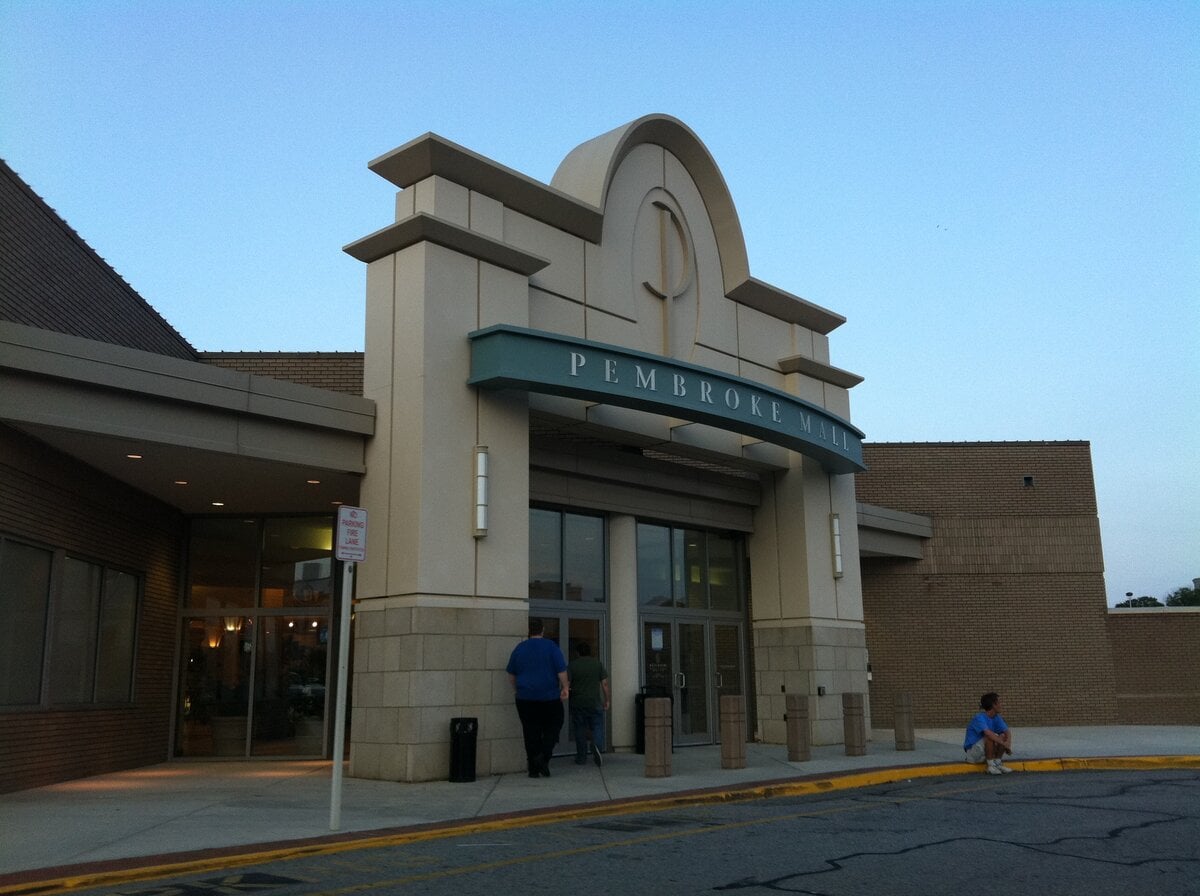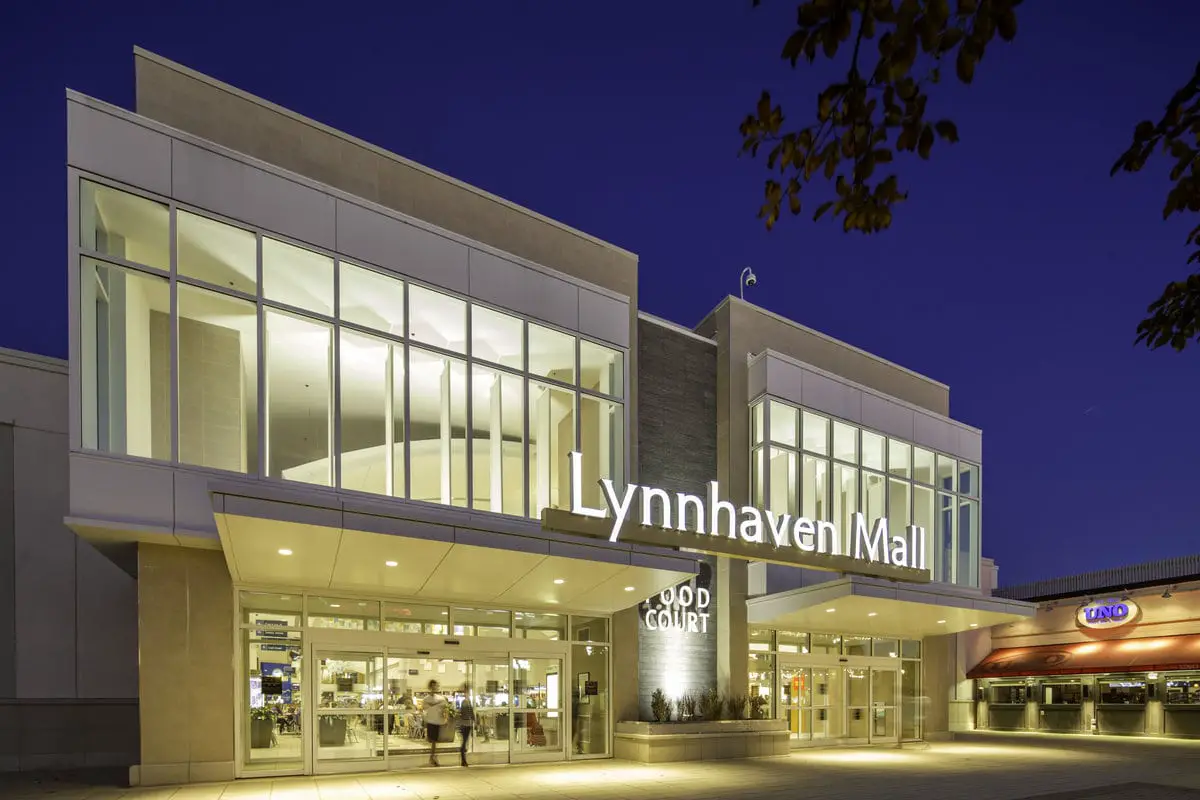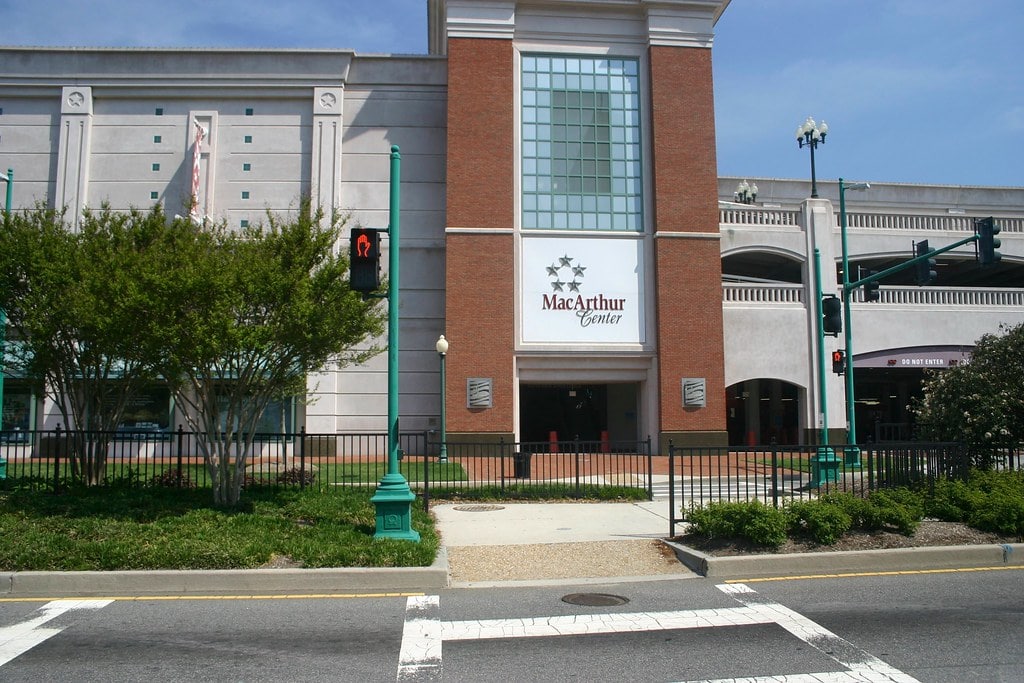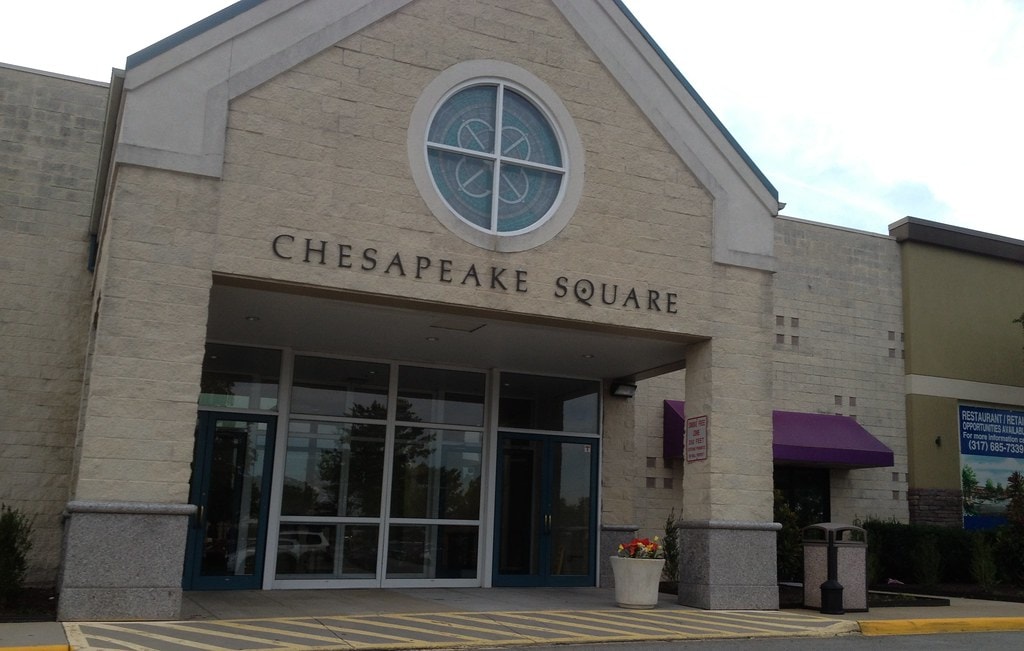Lynnhaven Mall Opens in Virginia Beach
A new commercial landmark opened its doors in Virginia Beach in August 1981. Lynnhaven Mall became, at the time, the largest shopping center between Washington, D.C. and Atlanta.
The $50 million development introduced a modern retail core to one of the region's fastest-growing cities.
Located along Lynnhaven Parkway just south of Interstate 264, the mall immediately reshaped the area's landscape.
It was developed by Melvin Simon & Associates of Indianapolis, one of the nation's leading enclosed mall builders.
The company had been active in regional mall construction throughout the 1970s and brought a full-scale suburban model to Hampton Roads.
The two-level structure opened with six major department stores, a multi-screen theater, and 94 occupied retail spaces out of 160.
A grand opening program featuring national television personalities drew large crowds to the new regional center.
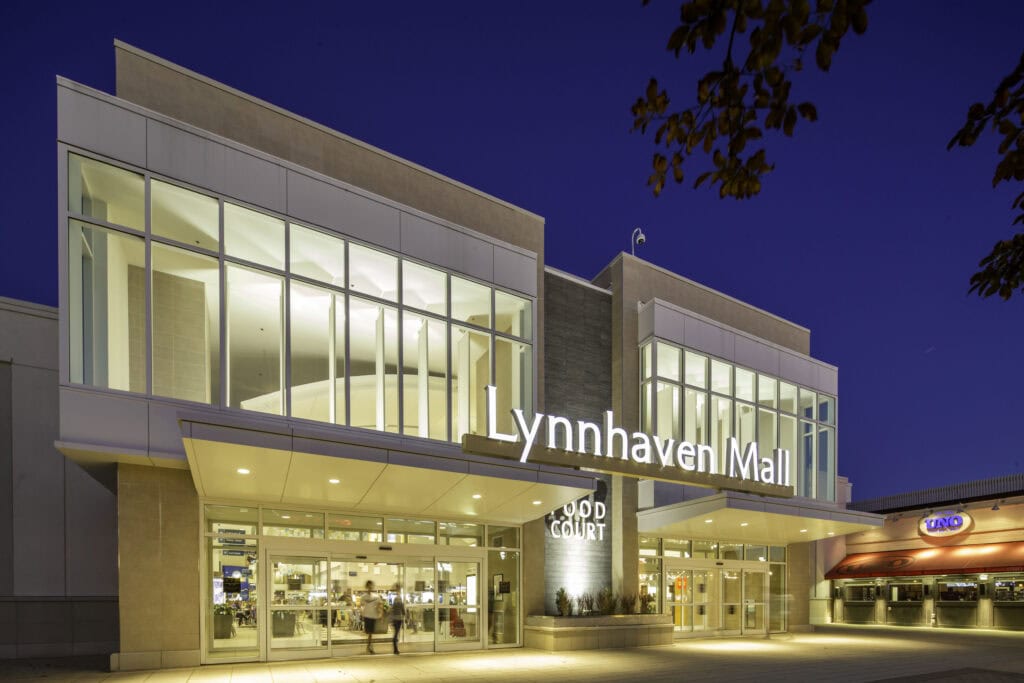
Planning and Conception
City and developer discussions of the Lynnhaven Mall project began by early 1979.
That February, the Virginia Beach Sun reported that the mall would begin construction later that year at a cost of $50 million.
The chosen site was part of the Holland Study Area, identified by the city in 1979 as having potential for major development.
The parcel's proximity to the newly improved State Route 44, later designated Interstate 264, made it an ideal location for large-scale retail use.
Melvin Simon & Associates, founded in 1960, was then among the top developers of shopping centers in the United States.
By the late 1970s, the firm had shifted its focus from strip centers to enclosed malls, constructing projects in multiple states.
Its plan for Virginia Beach called for a fully enclosed, climate-controlled regional mall with extensive parking and access to surrounding arterial roads.
Approval and Zoning
The city of Virginia Beach reviewed zoning and infrastructure proposals related to the Lynnhaven site throughout 1978 and 1979.
Documents from July 2, 1979, described the area as suited for major commercial expansion.
While some residents voiced concern about the pace of urban growth, the project moved forward without significant opposition.
A Washington Post article from June 1979 acknowledged the mall as a symbol of the city's rapid development, citing both optimism and apprehension over its scale.
By late 1979, city council minutes recorded the mall as under construction, with occupancy anticipated for 1980.
Subsequent entries in June 1981 projected completion for July of that year, indicating minor construction delays but no interruption of the overall schedule.
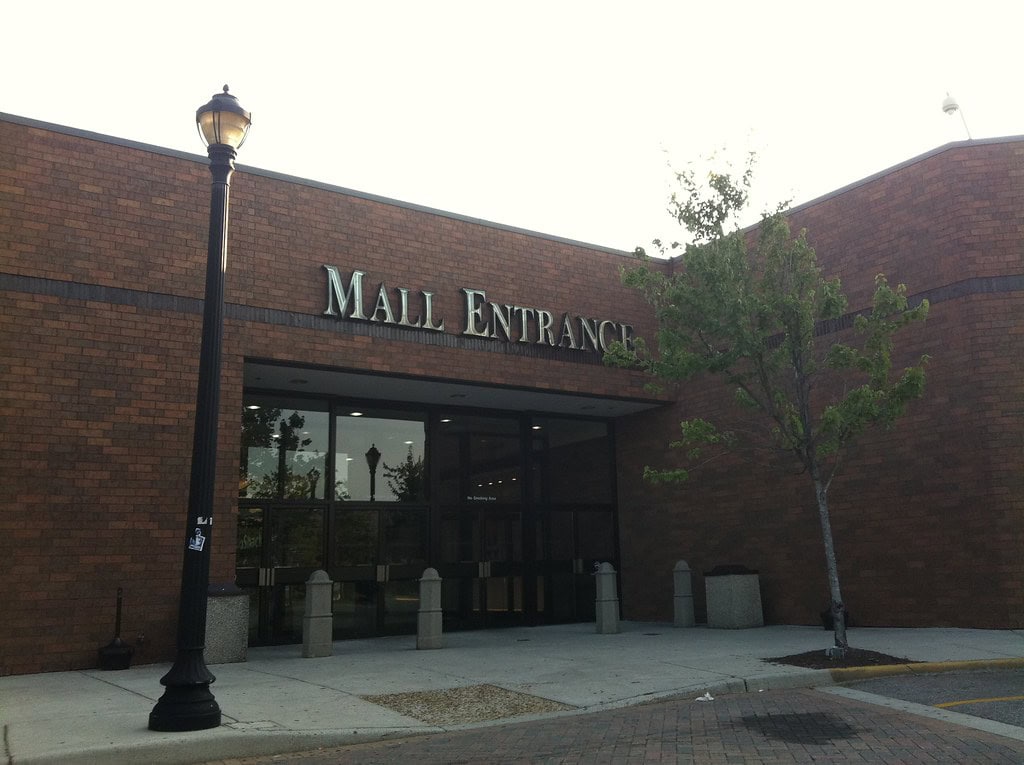
Construction and Design
Site preparation and early construction activity began in 1979.
Local accounts confirm that ground work and structural framing were visible by early that year.
Mid South Interiors was engaged for exterior wall and structural sheathing work, while Melvin Simon & Associates managed overall development and leasing.
The design incorporated a two-level layout with wide corridors, skylights, and a central atrium.
Descriptions from the period refer to dark brown brick finishes, sharp architectural angles, and broad interior walkways suited for heavy foot traffic.
The completed mall offered 1,170,000 square feet of gross leasable area and 6,272 parking spaces.
It included space for 160 stores, with 94 occupied at the time of opening.
The upper-level food court featured a vaulted atrium, and the main entrance was enclosed in glass, creating a visible focal point from Lynnhaven Parkway.
Opening and Dedication
Although construction finished in July 1981, public opening events took place in August.
The UA Movies at Lynnhaven Mall theater, located on the second floor near the food court, opened July 31, 1981, serving as a soft opening ahead of the full launch.
Grand opening ceremonies followed in August, extending over several days.
Television stars Victoria Principal and Jamie Farr attended as featured guests.
Principal, known for her role on "Dallas," and Farr, of "MAS*H," led opposing teams in a celebrity tug-of-war staged for promotional purposes.
The principal's team won the event, which news coverage described as lively but friendly.
Footage from the event showed large crowds throughout the mall, and reports noted that "shoppers seemed to lap it up like milk," a reflection of the strong public response.
Civic Context and Impact
At the time of its completion, Lynnhaven Mall stood as a centerpiece of Virginia Beach's suburban expansion.
City documents from 1979 to 1981 record new road and utility improvements around the site, including a four-lane connector to Independence Boulevard, built to support expected traffic volumes.
The project advanced despite ongoing debates over growth, environmental management, and air station compatibility in the nearby Oceana corridor.
The mall site lay within a noise and accident potential zone related to Naval Air Station Oceana, but zoning adjustments allowed the project to proceed.
Upon opening, Lynnhaven Mall joined a small number of major retail complexes serving the Hampton Roads region.
It became a focal point for commerce south of the city's traditional centers, anchoring additional development along Lynnhaven Parkway.
The property was managed by Melvin Simon & Associates, which retained ownership and operational control following completion.
Significance at Opening
When Lynnhaven Mall opened in August 1981, it represented a major civic and economic milestone for Virginia Beach.
The six anchor tenants, JCPenney, Montgomery Ward, Rices Nachmans, Thalhimers, Miller & Rhoads, and Leggett, linked national and regional retailing traditions under one roof.
Its 1.17 million square feet of space and regional scope made it the largest shopping complex between Washington, D.C., and Atlanta at the time.
The project's completion marked the culmination of more than two years of construction and nearly three years of municipal planning.
In scale, cost, and design, Lynnhaven Mall reflected both the ambitions of its developer and the rapid suburban growth of Virginia Beach at the start of the 1980s.

